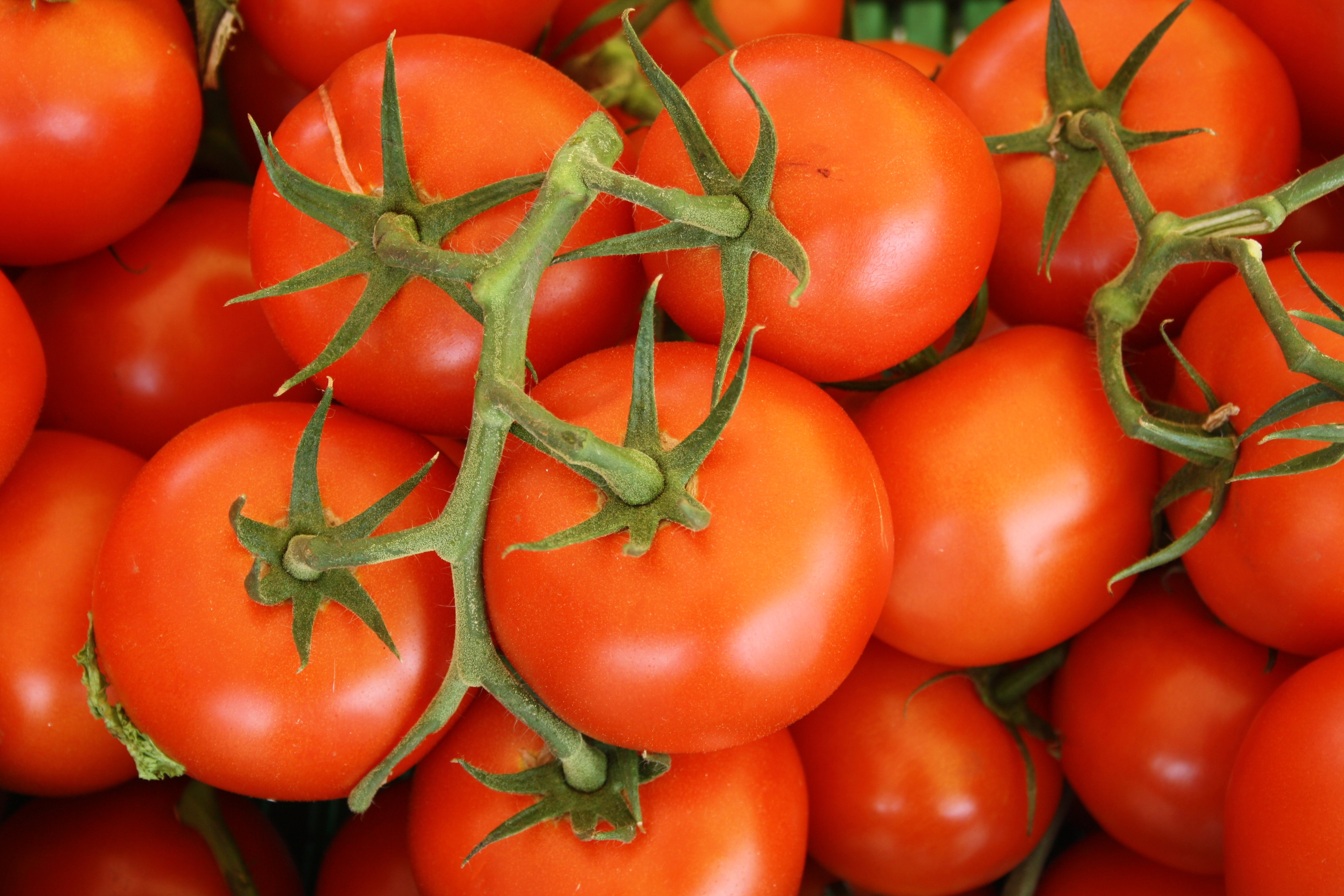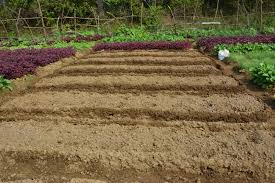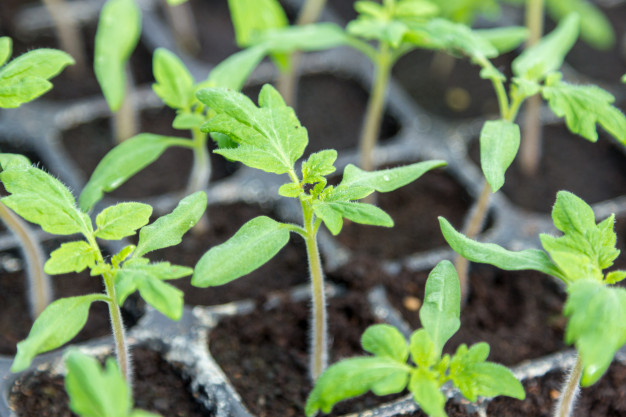
Tomato Nursery Preparation And Its Management: Things You Should Know
- By Agrosiaa Admin --
- Feb 13, 2021--
Hello Friends,



In India Tomato is important from economic point of view and area under its cultivation is increasing day by day, because It is a short duration crop that is used not only for high yields but also in large scale production as well as in many processed goods manufactured for export purposes.
As we all know the beginning with healthy and vigorous transplants is the key to a successful crop. Tomato seedlings are terribly sensitive to seedling diseases and should be protected. Friends, therefore, nursery is a superb way to establish Tomato plantings.

HEALTHY TOMATOES
First of all, let's know why the nursery is very important for the Tomato crop?
If small seeds of vegetables are direct sown in the field, germination is commonly poor and also the young plant grows very slowly and needs a lot of time to mature.
Also, there may be limitations in terms of the available season for the complete development in the field.
To overcome these problems, vegetable crops are grown in a nursery before being transplanted in the field.
Below given are some advantages of a nursery in Tomato crop.
1. Nursery makes seedlings potential to produce favourable growth conditions i.e. germination yet as growth.
2. Better care of younger plants because it is simple to see when a nursery in a little space against pathogenic infection, pest and weed.
3. Crop grown by nursery raising is kind of early and fetch a better value within the market and thus economically additional profitable.
4. There is a saving of land and labor because the main field is going to be occupied by the crop for a lesser duration. Thus intensive crop rotations are often followed.
5. More time is available for the preparation of the main field as a result of the nursery is grown separately.
6. As vegetable seeds are very expensive, notably hybrids, seed cost can be economized by sowing them in the nursery.
So friends, we have a lot of benefits of preparing tomato seedlings in the nursery. But in order to build a good nursery, the most important thing is to choose the right site for the nursery.
Criteria of site selection for raising nursery.
1. Choose a well-drained area with proper sunlight.
2. For straightforward irrigation, the nursery ought to be concerning the water supply.
3. The area should be protected against pets and wild animals.
4. The sandy loam and loam soils rich in organic matter are suitable.
5. The soil of the selected area should be free from pathogens and pests.
6. Avoid using the same place for nursery bed preparation every year.
How to prepare a nursery for Tomato cultivation?
To prepare a nursery in a one-hectare area, 200-250 gm seeds for hybrid varieties and 350-400 gm seeds for other varieties are sufficient.
Seed treatment should be done first. Because treating seeds will increase the quality of the crop and additionally increases the yield.
Treat the seeds with the antifungal Thiram or Captan, 2.5 gm/kg of seeds. Treat the seeds with Trichoderma viride @ 4 g / kg or Pseudomonas fluorescens @ 10 g/ kg of seeds; seed lines spaced at 10-15 cm in raised nursery beds and cover it with soil. Watering should be done daily.
Based on space availability in your farm Tomato nursery can be prepared by two methods
1. Raised bed Method
2. Tray Method
1] Raised Bed Method
The raised bed should be 90 cm (3 ft.) wide, 30 cm (1 ft.) high from ground level & 540 cm (18 ft.) length is sufficient for raising 15 gm seeds, but nearly 4 beds of raising seedlings will require for one acre transplanting area.

PREPARED RAISED BEDS FOR NURSERY
Procedure
1. Deeply plow the land and remove the clods and stubbles
2. Prepare four beds of size 3 ft. x 18 ft. x 1 ft.
a. Mix Furadan-3G @ 15 gm per bed (to protect the seed from ants & termites)
b. Well decomposed FYM (or) VERMICOMPOST @ 15-20 kg. per bed (to bring the seedbed to fine tilth). Do not use fresh manure on a seedbed as it burns seedlings.
3. Make lines over the bed by using finger (or) wooden stick at 4 cm. apart (from line to line) with a depth of 1 cm.
4. Sow the seeds in the lines and then cover seeds with soil.
5. Give a one light irrigation.
Raising of seedling
Drench the nursery with Copper oxychloride @ 2.5 g/l of water at 15 days interval against damping-off disease. Apply Carbofuran 3 G at 10 g/sq.m. at sowing.
Young seedlings require sufficient water. Reduce water 1 week before transplanting to harden seedlings.
2] Tray Method

TOMATO SEEDLINGS GROWN IN PROTRAYS
1. Fill the protrays with Coco peat @ 1.2 kg Coco peat per tray.
2. Sow the treated seeds in protrays @ 1 seed per cell.
3. Cover the seed with coco peat and keep the trays one above the other and cover with a polythene sheet till germination starts (5 Days).
4. After 6 days, place the protrays with germinated seeds on the raised beds inside a shade net.
A suitable Tomato plant for transplanting is 7.5 cm to 10 cm in height and has a good sturdy stem. The seedlings are ready for transplanting in about 25-30 days after sowing. The seedlings with 5-6 true leaves are ready for transplanting within 4 of sowing.
Conclusions:
I've compiled the following key takeaways from this blog:
1. Tomato crop should transplant by using seedlings instead of sowing seeds directly in the field.
2. Select a well-drained area with proper sunlight and irrigation facility for raising a nursery.
3. As per availability of space we can grow nursery by Raised bed Method or Tray Method.
4. About 25-30 days old seedlings should be used for transplanting.
I'll be writing on alternative necessary factors that have an effect on Tomato crop growth and its yield in my next article Diseases in Tomato crop.
So keep tuned together with your Farm Friend.
See you soon!
Ram Ram!










IMPORTANT LINKS
http://krishi.maharashtra.gov.in/Site/Upload/Pdf/PMFBY__2020_Gr_for_publication.pdf
http://krishi.maharashtra.gov.in/Site/Upload/Pdf/PMFBY_Process_Leaflet_Final_Print_File_15-10-2020.pdf